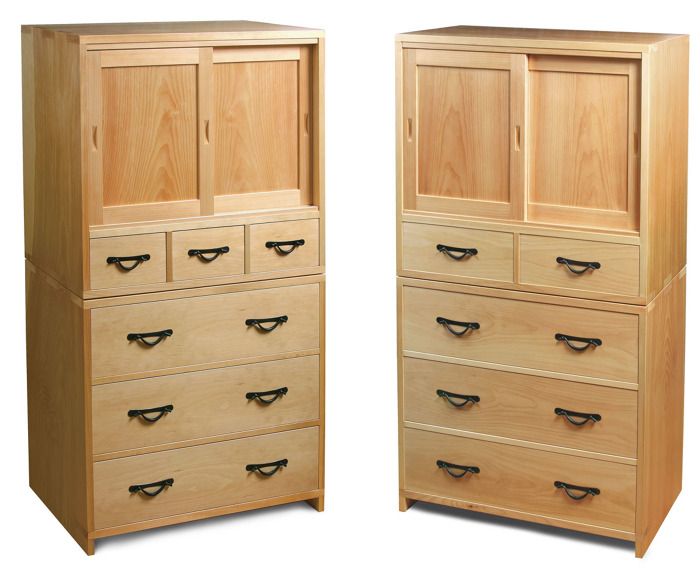Stacking tansu dressers

This pair of tansu cabinets is actually four pieces, stacked two and two. I made them from wide pine planks, using traditional Asian joinery. The hardware is from HidaTool.com.
I’ve always been attracted to the look of Japanese tansu cabinets, which are often modular and stackable. When a coworker took down a big pine tree and had the planks sawn and dried, I saw my chance at enough wide, matching planks to cover the sides of four cabinets, in two stacks, his and hers. Pine isn’t the most durable wood, but I figure the dents and dings will suit the utilitarian nature of this type of furniture. I planned my cuts so the grain would be continuous down the sides of both stacks of cabinets, and worked in a bit of typical Japanese assymetry, making the upper bank of drawers different in each pair. The pinned box joint is also typical of the style.
I put hard maple on all the wear surfaces-using it in the web frames, adding strips on the bottom of doors and drawer sides, and inlaying it into the door tracks-to ensure a long happy life.
The traditional tansu pulls are called Hirukan, available from HidaTool.com.
















Comments
Really nice. Good for you for using the pine; you did the wood justice.
Thanks for sharing.
Great pieces Asa.
These are really handsome. As the pine begins to show its use, it will be true to Japanese tradition of beauty, wabi sabi, which values things that are worn from use and care.
How about writing up plans in the magazine? It would make a great project!
No plans to write these up in the magazine. I don't think I would recommend these tab joints on cabinets that are this big. They don't register the parts very well during clamp-up, and things can easily get out of whack. But if you want to see how I made them, or the sliding doors (which work wonderfully) read Seth Janofsky's excellent articles on our website, or in back issues.
Love that note about wabi sabi. I think I had heard that somewhere, and had it in the back of my mind. Now I feel smart!
Log in or create an account to post a comment.
Sign up Log in